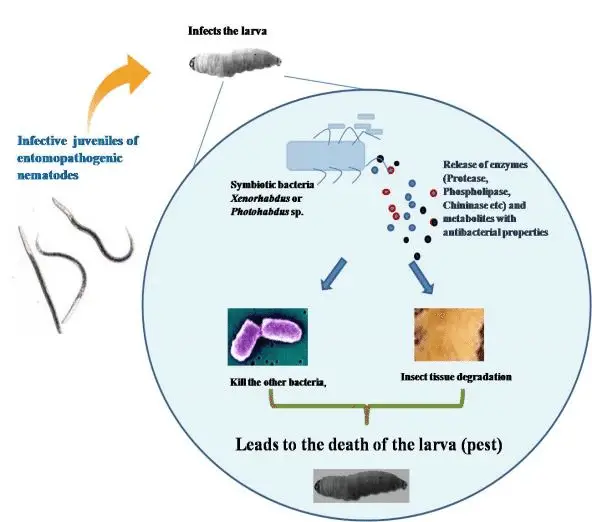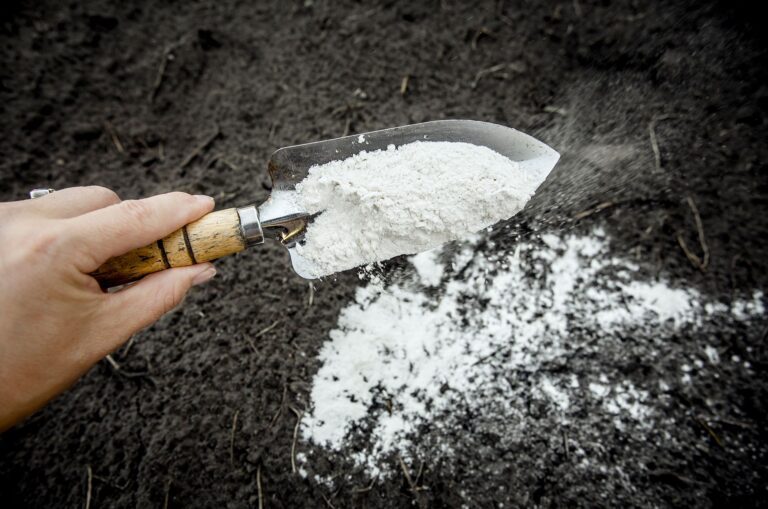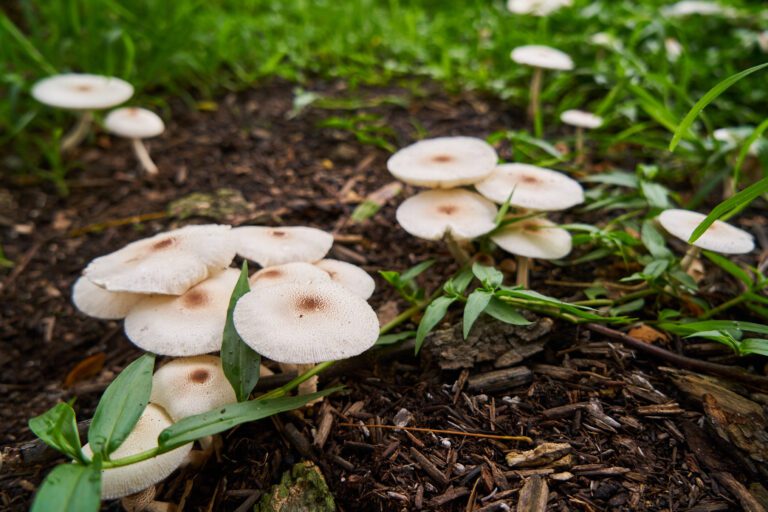How to Get Rid of Thrips: 5 Effective Ways to Handle and Halt These Pests from Your Plants
Table of Contents
Understanding the Threat: Identifying Thrips and Their Impact on Plants

Thrips, tiny and winged insects, may appear harmless at first glance, but they can wreak havoc on your beloved plants. These pesky pests belong to the order Thysanoptera and are notorious for their piercing-sucking mouthparts, which they use to extract the juices from the leaves, flowers, and fruits of plants. As they feed, they not only cause physical damage but also transmit viruses, making them a significant threat to the health of your garden or indoor plants.
Identifying thrips can be a challenging task due to their minute size, usually ranging from 1 to 3 millimeters in length. However, there are some key characteristics you can look out for. Thrips typically have elongated, slender bodies that are yellow, brown, black, or even translucent in color. They possess fringed wings, giving them a feathery appearance when viewed up close. Additionally, some species may exhibit distinctive patterns or coloration. Being diligent and observant in inspecting your plants for these telltale signs is essential for early detection and effective management of thrip infestations.
The impact thrips can have on plants is far from negligible. These insects not only cause direct damage through their feeding but also indirectly harm plants by transmitting various plant diseases. Thrips can introduce viruses, such as Tomato spotted wilt virus and Impatiens necrotic spot virus, to susceptible crops and ornamental plants. Once infected, the plants may display symptoms such as necrotic spots, stunted growth, distorted leaves, and reduced yield. Additionally, thrip feeding can lead to the silvering or bronzing of plant tissues, affecting their aesthetics and overall vigor. Understanding the threat thrips pose helps us realize the urgency and importance of implementing appropriate control measures to protect our plants from these persistent pests.
Creating an Unattractive Environment: Implementing Proper Plant Care Practices
Proper plant care practices are paramount in creating an environment that thrips find unattractive. Thrips are known to thrive in conditions where plants are weakened or stressed, so it is essential to implement measures that promote strong and healthy plant growth. Regularly inspecting plants for signs of damage or infestation, such as distorted leaves or silvering, is crucial in catching and addressing thrip problems early on.
Maintaining appropriate moisture levels is also key in preventing thrip infestations. Thrips prefer dry conditions, so proper watering techniques should be employed to avoid excess moisture stress. Overwatering or underwatering can weaken plants and make them more susceptible to thrip attacks. Additionally, it is essential to ensure proper drainage to prevent waterlogged roots, which can create an environment favorable to thrips.
By implementing these plant care practices, gardeners can create an unattractive environment for thrips, reducing the likelihood of infestations. However, it is important to note that these measures alone may not eliminate the risk entirely. To further strengthen our defenses against thrips, it is crucial to explore additional methods that complement proper plant care practices.
Natural Defense Mechanisms: Utilizing Beneficial Insects for Thrip Control
Beneficial insects play a crucial role in the natural defense mechanisms against thrips infestations in plants. These insects, such as ladybugs, lacewings, and predatory mites, are effective predators of thrips, feeding on both the adults and larvae. By introducing these beneficial insects into your garden or greenhouse, you can establish a balanced ecosystem where the population of thrips is kept in check.
Ladybugs, also known as lady beetles or ladybird beetles, are particularly effective predators of thrips. These small, brightly colored insects feed on thrips and other soft-bodied pests, reducing their numbers significantly. Lacewings are another beneficial insect that preys on thrips. As voracious eaters, lacewings consume large quantities of thrips and their eggs, providing effective control. Predatory mites are microscopic insects that feed on thrips at various stages of their life cycle, including eggs and nymphs. These tiny warriors can be released directly onto plants or applied as a foliar spray, ensuring targeted thrip control.
Introducing beneficial insects for thrip control is not only an effective and environmentally friendly method, but it also promotes a healthy and balanced ecosystem in your garden or greenhouse. These natural defenders work tirelessly to keep thrip populations under control, reducing the need for chemical interventions and helping your plants thrive.
Breaking the Reproduction Cycle: Disrupting Thrip Life Stages
Disrupting the reproduction cycle of thrips is essential in effectively controlling their population in gardens and plantations. By targeting various life stages of these pests, gardeners can significantly reduce their numbers and prevent further infestations.
One effective method for breaking the reproduction cycle of thrips is through the removal of infested plant material. Thrips are known to lay their eggs inside plant tissue, making it crucial to promptly remove and discard any infested leaves or flowers. Regularly inspecting plants for signs of thrip damage and promptly removing any affected parts can greatly disrupt their life cycle and prevent their population from escalating. Additionally, maintaining cleanliness in the garden, such as clearing away fallen plant debris and keeping the area free from weeds, can further deter thrip populations by reducing their preferred breeding sites.
Chemical Intervention: Using Organic and Synthetic Pesticides as a Last Resort
Chemical intervention, specifically the use of organic and synthetic pesticides, should only be employed as a last resort when all other methods of thrip control have failed. While these pesticides can effectively eliminate thrip populations, they can also have adverse effects on the environment and beneficial insects. It is essential to exercise caution and carefully follow the instructions provided by manufacturers to minimize any harmful impact.
One option for chemical intervention is the use of organic pesticides. Derived from naturally occurring substances, these pesticides are considered a more environmentally friendly choice. Organic pesticides such as neem oil and pyrethrin can be effective in controlling thrips without causing significant harm to beneficial insects or other non-target organisms. However, it is important to note that even organic pesticides should be used sparingly and only when absolutely necessary.

neem oil as organic pesticide
On the other hand, synthetic pesticides are formulated with chemicals specifically designed to eliminate pests, including thrips. These pesticides often have a broader range of effectiveness and can provide immediate control of thrip infestations. However, it is crucial to employ synthetic pesticides with caution due to their potential negative impact on the environment and non-target organisms. Additionally, overuse or incorrect application of synthetic pesticides can lead to the development of pesticide resistance in thrips, making future control even more challenging.
Before considering chemical intervention, it is recommended to exhaust other thrip control methods and consult with a professional or local extension service for guidance. Their expertise can help determine the best course of action, weighing the benefits against potential risks.
Cultural Control Methods: Removing Infested Plant Material and Maintaining Cleanliness
Cultural control methods play a crucial role in the effective management of thrip infestations. One of the key practices is the removal of infested plant material. Thrips can hide within the foliage, flowers, or fruits of plants, making them difficult to spot. Regular inspection is necessary to identify any signs of thrip damage or presence. Infested leaves, flowers, or fruits should be promptly removed and disposed of properly to prevent the spread of the pests. By eliminating the affected plant material, we can reduce the population of thrips and limit their ability to reproduce and spread in the garden or greenhouse.
In addition to removing infested plant material, maintaining cleanliness in the growing environment is essential. Thrips are attracted to plants with dense foliage, as they provide hiding places and ample feeding opportunities. By regularly pruning and thinning plants, we can create an environment that is less attractive to thrips. Fallen leaves and debris should also be cleared away to minimize the potential hiding spots for these pests. Regularly cleaning gardening tools and equipment is also important to prevent the transfer of thrips to healthy plants. By implementing these cleanliness practices, we can significantly reduce the risk of thrip infestations and promote overall plant health.
• Regular inspection is necessary to identify signs of thrip damage or presence
• Promptly remove and dispose of infested leaves, flowers, or fruits
• Eliminating affected plant material reduces thrip population and spread
• Maintain cleanliness in the growing environment to deter thrips
• Regularly prune and thin plants to create a less attractive environment for thrips
• Clear away fallen leaves and debris to minimize hiding spots for pests
• Clean gardening tools and equipment regularly to prevent transfer of thrips
Physical Barriers: Employing Protective Measures to Prevent Thrip Infestations
Physical barriers are an effective tool in preventing thrip infestations and protecting your plants. These barriers can include nets, screens, or row covers that are placed over your plants to create a physical barrier between them and the thrips. By implementing these protective measures, you can significantly reduce the chances of thrips reaching your plants and causing damage.

One advantage of using physical barriers is that they are a non-toxic and environmentally friendly method of thrip control. They do not require the use of any pesticides or chemicals, making them a safe option for both your plants and the surrounding environment. Additionally, physical barriers are a long-term solution that can be used continuously throughout the growing season to prevent new thrip infestations. They provide a physical barrier that makes it difficult for thrips to access your plants, minimizing the risk of damage to your crops.
Incorporating physical barriers into your thrip management strategy can be particularly beneficial for greenhouse or indoor gardeners. These enclosed spaces are more susceptible to thrip infestations, as the pests have limited opportunities to disperse or escape. By installing screens or nets on windows and ventilation openings, you can effectively block thrips from entering your greenhouse or indoor garden. This proactive approach can help maintain a thrip-free environment and protect the health and productivity of your plants.
Soil Treatment: Applying Nematodes and Other Soil Amendments for Thrip Control
Soil Treatment: Applying Nematodes and Other Soil Amendments for Thrip Control
When it comes to effective thrip control, implementing soil treatments can play a crucial role in eradicating these pests from your garden. One highly effective method is the application of nematodes, which are microscopic organisms that can seek out and destroy thrip larvae hiding in the soil. These beneficial nematodes act as natural predators, feeding on thrips and preventing them from causing further damage to your plants.

To utilize nematodes for thrip control, it is important to apply them properly. Begin by mixing the nematodes with water according to the manufacturer’s instructions, ensuring the right concentration for maximum effectiveness. Next, evenly distribute the nematode solution over the affected areas of the soil, making sure to cover all the roots and base of the plants. This application method ensures that the nematodes can effectively seek out and attack thrips at their most vulnerable stage, preventing further infestation and damage.
In addition to nematodes, there are other soil amendments that can help in thrip control. For example, the application of diatomaceous earth to the soil can act as a barrier that prevents thrips from emerging from the soil. This natural substance contains sharp microscopic particles that pierce the soft bodies of thrips, causing them to dehydrate and die. By incorporating diatomaceous earth into the soil, you create an inhospitable environment for thrips, discouraging their infestation and reducing their numbers over time.
Overall, soil treatments such as nematodes and diatomaceous earth can be incredibly effective in controlling thrip populations in your garden. By incorporating these methods into your thrip control strategy, you can significantly reduce the damage caused by these pests and ensure the health and vitality of your plants.
Trapping and Monitoring: Employing Sticky Traps and Visual Inspections to Assess Thrip Populations
Trapping and monitoring play a crucial role in effectively managing and assessing thrip populations. Employing sticky traps is a popular method for capturing adult thrips. These adhesive traps are strategically placed in the garden or greenhouse, attracting and immobilizing thrips upon contact. By regularly checking these traps, gardeners can gain valuable insights into the population density and activity level of thrips within their growing environment.
Visual inspections further enhance the assessment of thrip populations. These inspections involve closely examining plants for signs of infestation, such as stippling, silvering, or deformed growth caused by thrip feeding. Additionally, the presence of black fecal droppings, shed skins, or eggs can provide further evidence of thrips. By inspecting both the upper and lower leaf surfaces, along with stems and flowers, gardeners can ensure a comprehensive assessment of thrip presence. Monitoring the number of thrips, their life stages, and their distribution throughout different plant areas aids in devising targeted control measures to combat the infestation effectively.
Foliar Sprays: Utilizing Homemade Remedies to Deter and Eliminate Thrips
Another homemade foliar spray that has proven effective against thrips is a neem oil solution. Neem oil is derived from the seeds of the neem tree and is known for its insecticidal properties. It disrupts the feeding and reproductive behavior of thrips, ultimately leading to their demise. To prepare a neem oil spray, mix a few teaspoons of neem oil with water and a small amount of liquid soap to help the mixture adhere to the plants. Apply the solution to both the upper and lower surfaces of the leaves, focusing on areas where thrips are most likely to congregate. This organic spray provides a safe and environmentally friendly alternative to chemical pesticides.
When utilizing homemade foliar sprays, it’s important to note that thorough coverage is key to maximize their efficacy. Regularly monitor your plants for any signs of thrip infestation, such as discolored or distorted leaves, and promptly apply the sprays as a preventive measure. Remember to conduct a patch test on a small section of your plant before applying any spray to the entire plant, as some plants may be sensitive to certain ingredients. Incorporating homemade foliar sprays into your Thrip control strategy can help protect your plants from these pesky pests while minimizing harm to beneficial insects and the environment.
Companion Planting: Selecting Plants That Naturally Repel Thrips
Selecting the right companion plants can be an effective strategy to naturally repel thrips and protect your garden. Certain plants have natural defenses that thrips find unappealing, helping to deter them from infesting your crops. By incorporating these companion plants into your garden, you can create a more unfavorable environment for thrips and reduce the risk of damage to your plants.
One popular companion plant that naturally repels thrips is garlic. The strong aroma of garlic is known to repel many pests, including thrips. Planting garlic near susceptible crops can act as a deterrent, reducing the chances of thrips infestation. Another option is marigolds, which not only add vibrant colors to your garden but also have a strong odor that repels thrips. These colorful flowers emit a scent that thrips find unpleasant, making them an excellent choice for companion planting.

Garlic companion plants
Integrated Pest Management: Developing a Holistic Approach to Thrip Control
Integrated Pest Management (IPM) offers a holistic approach to thrip control, addressing the issue from multiple angles to achieve long-term success. This method focuses on preventive measures, cultural controls, and targeted interventions to minimize the need for synthetic pesticides. By incorporating various strategies and utilizing natural solutions, gardeners can effectively manage thrip populations without causing harm to the environment or beneficial insects.
One key aspect of IPM is practicing proper plant care and maintenance. This includes regular inspections to monitor for thrip presence, removing infested plant material, and maintaining cleanliness in the garden. Implementing these cultural control methods creates an unattractive environment for thrips, reducing their ability to reproduce and infest new plants. Furthermore, promoting plant health through proper watering, fertilizing, and pruning techniques boosts the plants’ natural defenses, making them less susceptible to thrip damage. Additionally, employing physical barriers, such as covering plants with spun-bonded row covers, can prevent adult thrips from reaching the plants and laying eggs. By incorporating these preventive measures into a gardening routine, the risk of thrip infestations can be significantly minimized.
Seeking Professional Help: Consulting with Horticulturists or Extension Services for Thrip Management Guidance
Seeking professional help is an important step in effectively managing thrip infestations in your garden or plant nursery. Horticulturists and extension services can provide valuable guidance and expertise to help you devise a comprehensive thrip management plan. These professionals have a deep understanding of thrip behavior, lifecycle, and control methods, and can offer individualized advice based on your specific needs.
Horticulturists and extension services can assist you in identifying thrip species and assessing the severity of the infestation. Armed with this knowledge, they can recommend appropriate control measures tailored to your situation. From cultural control methods such as pruning infested plant material and maintaining cleanliness, to the application of organic or synthetic pesticides as a last resort, they will guide you through the most effective strategies for combating thrips. Additionally, they can educate you on proactive measures to prevent future thrip infestations, such as selecting companion plants that naturally repel these pests.
Consulting with these professionals also ensures that you stay updated on the latest research, best practices, and innovative methods for thrip management. They can share valuable insights into new products, techniques, and scientific advancements that may enhance your control efforts. By seeking their expertise, you gain access to a wealth of knowledge that can empower you to effectively address thrips and safeguard the health and productivity of your plants.
What is the role of horticulturists or extension services in thrip management?
Horticulturists and extension services can provide valuable guidance and expertise in managing thrip infestations. They can help identify the presence of thrips and assess the impact on plants, as well as recommend appropriate control methods and strategies.
How can I identify thrips and understand their impact on plants?
Thrips are small, slender insects that feed on plant tissues and can cause damage by sucking sap and transmitting viruses. Horticulturists or extension services can help identify thrips through visual inspection and microscope examination, and they can provide insights into the specific damage they cause to different plant species.
Are there natural defense mechanisms that can be utilized for thrip control?
Yes, beneficial insects can be employed as natural defense mechanisms against thrips. Horticulturists or extension services can guide you in utilizing these beneficial insects, such as predatory mites or ladybugs, to help control thrip populations.
How can I disrupt the reproduction cycle of thrips?
Breaking the reproduction cycle of thrips is essential for effective control. Horticulturists or extension services can provide guidance on methods to disrupt thrip life stages, such as removing infested plant material, pruning affected areas, and implementing proper sanitation practices.
When should organic or synthetic pesticides be used for thrip management?
Organic and synthetic pesticides should be used as a last resort when other control methods have been ineffective. Horticulturists or extension services can advise on the appropriate pesticide options, their application methods, and safety precautions to consider.
What are cultural control methods for managing thrips?
Cultural control methods involve practices like removing infested plant material, maintaining cleanliness in the growing area, and practicing proper plant care techniques. Horticulturists or extension services can provide guidance on implementing these methods to minimize thrip infestations.
Are there physical barriers that can prevent thrip infestations?
Yes, employing physical barriers can help prevent thrip infestations. Horticulturists or extension services can provide information on protective measures like using fine mesh screens, row covers, or other physical barriers to keep thrips away from plants.
Can soil treatment help control thrips?
Yes, soil treatment can be effective in controlling thrips. Horticulturists or extension services can recommend the application of nematodes or other soil amendments to combat thrips in the soil, disrupting their life cycle and reducing populations.
How can I assess thrip populations in my garden?
Trapping and monitoring methods can be utilized to assess thrip populations. Horticulturists or extension services can provide guidance on using sticky traps or conducting visual inspections to monitor thrip activity and population levels.
Can homemade foliar sprays deter and eliminate thrips?
Yes, homemade foliar sprays can be used to deter and eliminate thrips. Horticulturists or extension services can provide recipes and guidance on making and applying these sprays, which often involve ingredients like neem oil, garlic, or soap.
Is companion planting an effective method for repelling thrips?
Yes, selecting plants that naturally repel thrips can be an effective method of control. Horticulturists or extension services can recommend companion plants that have insect-repelling properties, which can help deter thrips from infesting your garden.
What is integrated pest management (IPM) for thrip control?
Integrated Pest Management (IPM) is a holistic approach to thrip control that combines various methods and strategies. Horticulturists or extension services can help develop an IPM plan tailored to your specific situation, considering factors like plant species, location, and severity of thrip infestations.
When should I consult with a horticulturist or extension service for thrip management guidance?
It is advisable to consult with a horticulturist or extension service when dealing with thrip infestations that are beyond your control or knowledge. They can provide expert advice, identify specific thrip species, recommend appropriate control measures, and help ensure the health and well-being of your plants.

Suyash Dhoot, editor at SouthElMonteHydroponics.com, is a pioneering force in hydroponics. His expertise spans nutrient solutions and cutting-edge technology. Through meticulous editing, he elevates the site to a beacon of knowledge, offering invaluable insights. Dhoot’s dedication shapes a greener, more efficient future for agriculture.






